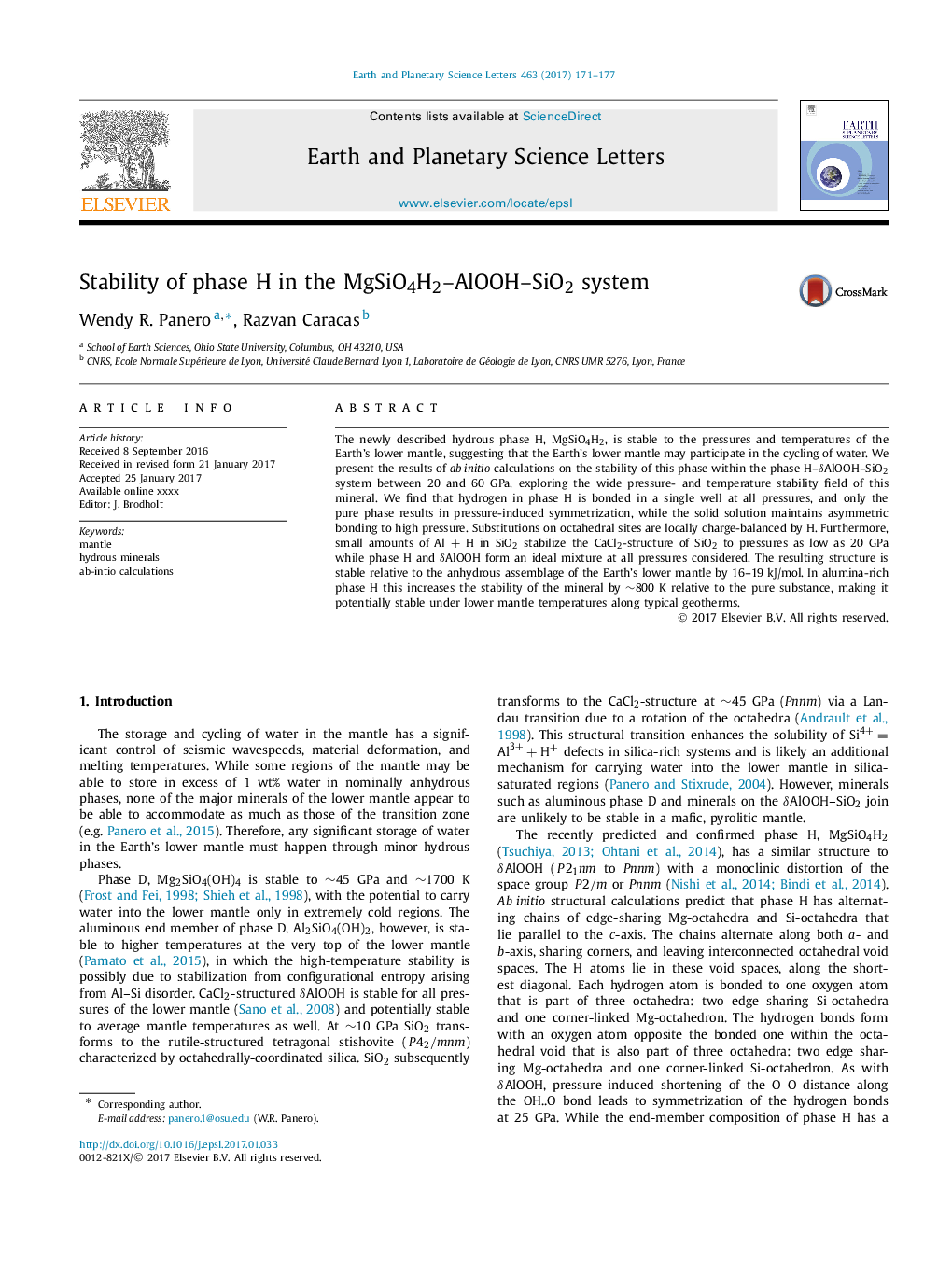| Article ID | Journal | Published Year | Pages | File Type |
|---|---|---|---|---|
| 5780101 | Earth and Planetary Science Letters | 2017 | 7 Pages |
Abstract
The newly described hydrous phase H, MgSiO4H2, is stable to the pressures and temperatures of the Earth's lower mantle, suggesting that the Earth's lower mantle may participate in the cycling of water. We present the results of ab initio calculations on the stability of this phase within the phase H-δAlOOH-SiO2 system between 20 and 60 GPa, exploring the wide pressure- and temperature stability field of this mineral. We find that hydrogen in phase H is bonded in a single well at all pressures, and only the pure phase results in pressure-induced symmetrization, while the solid solution maintains asymmetric bonding to high pressure. Substitutions on octahedral sites are locally charge-balanced by H. Furthermore, small amounts of Al + H in SiO2 stabilize the CaCl2-structure of SiO2 to pressures as low as 20 GPa while phase H and δAlOOH form an ideal mixture at all pressures considered. The resulting structure is stable relative to the anhydrous assemblage of the Earth's lower mantle by 16-19 kJ/mol. In alumina-rich phase H this increases the stability of the mineral by â¼800 K relative to the pure substance, making it potentially stable under lower mantle temperatures along typical geotherms.
Keywords
Related Topics
Physical Sciences and Engineering
Earth and Planetary Sciences
Earth and Planetary Sciences (General)
Authors
Wendy R. Panero, Razvan Caracas,
